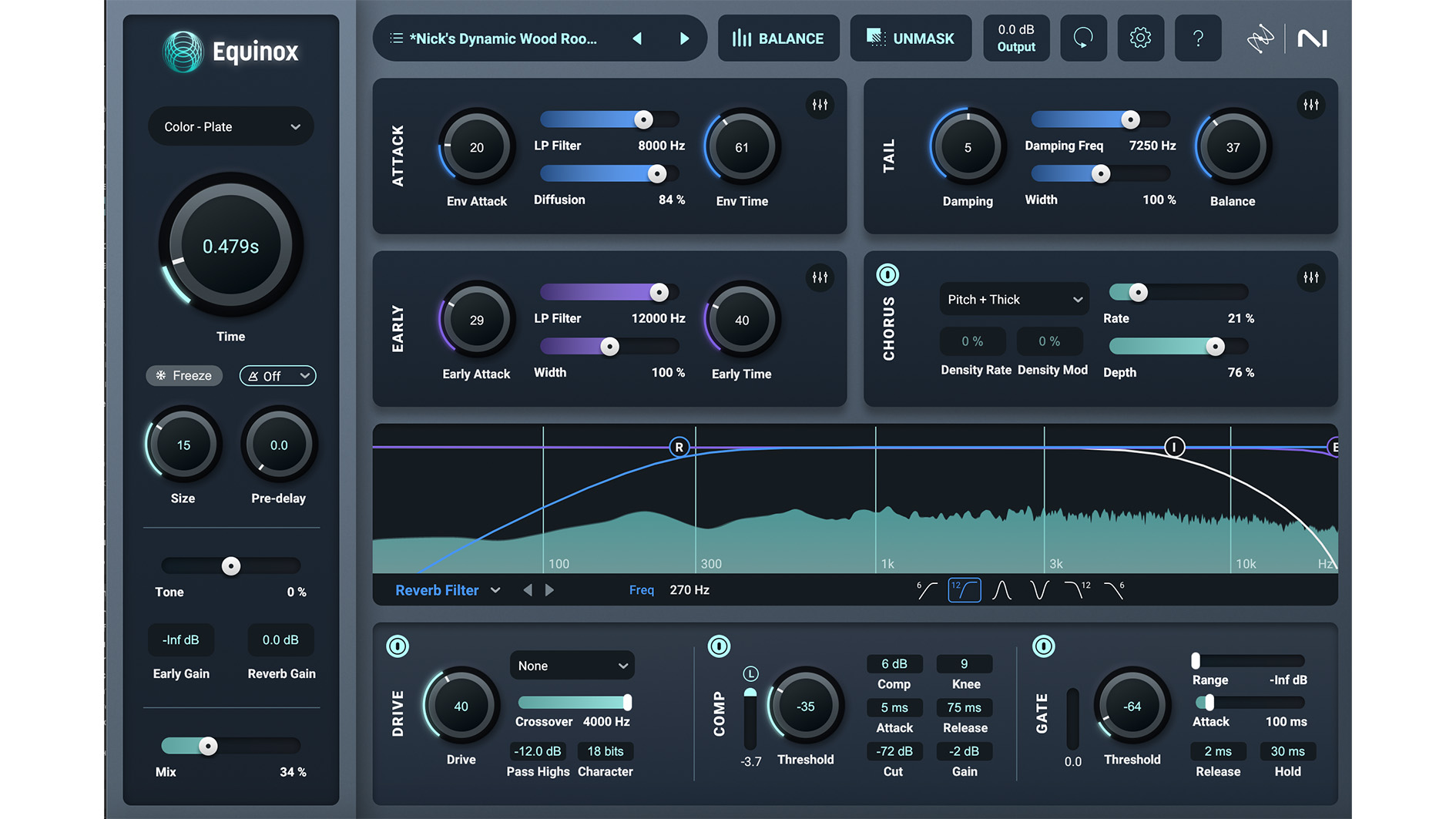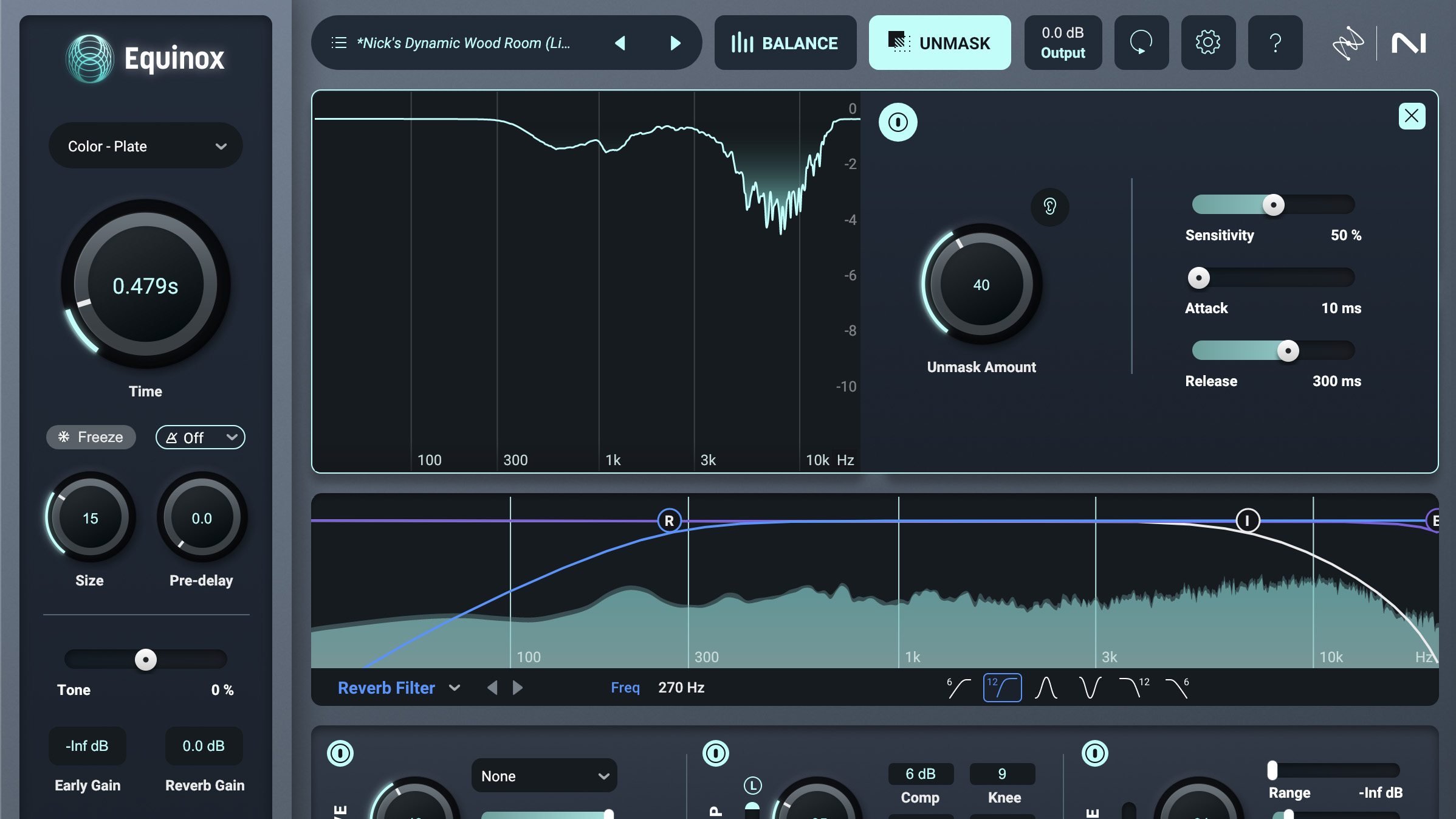
iZotope’s new reverb plugin Equinox is billed as ‘a potent fusion of legendary reverb engines and cutting-edge iZotope technology’, which is effectively the company’s way of saying that it has streamlined several different legacy plugins into a single product under a new name.
Those legacy products come from the varied range of reverbs previously sold under the Exponential Audio name. Exponential Audio was a brand originally founded by former Lexicon DSP engineer Michael Carnes, which released a variety of digital reverb tools throughout the 2010s. In 2019 Exponential was bought by iZotope, who were in turn acquired by Native Instruments in 2023.
We haven’t seen much happen under the Exponential name in that time. Back in 2022, iZotope discontinued the bulk of the Exponential product line, leaving just two products, Stratus, billed as a natural-sounding reverb engine, and Symphony, which offers a more characterful one.
In iZotope’s telling at the time, Exponential’s product line was entirely built around these two different reverb engines, and the company had decided to streamline the range down to the two most modern iterations.
Now, with the release of Equinox, iZotope is streamlining things further and placing both engines into a single, iZotope-branded plugin.
Pricing
- Full price: $249
What is it?
Much of what Equinox does is controlled from a single main window. In the left hand bar we get controls over the core reverb parameters. Here, a drop down lets the user select a reverb mode, of which there are eight, divided into Natural (derived from the Stratus engine) and Color (from Symphony), each with plate, hall and chamber variations.
Below this are controls for the time, size and pre-delay of the reverb, along with a dry/wet mix and level controls for the early and main reverb outputs. This side bar also contains a Tone control, which applies a tilt EQ and offers a quick way to alter the overall frequency response.
To the right of this is the main interface for the reverb, where Equinox offers a good amount of sound shaping depth. Expandable modules offer controls to tweak various elements of the reverb sound, targeting the reverb’s attack, the early reflections, the reverb tail and a chorus module, the latter of which can be switched on/off and offers several different styles of chorus.
To the bottom of the interface are three further effect modules, which control drive, compression and gating applied to the output signal. The drive module, like its chorus counterpart, offers a small selection of character variations. It also has a bit rate control, however, which works really nicely for adding a touch of old-school crunch to the reverb.
It's worth noting that the chorus and gate effects are only available for the Color reverb modes.
In the centre of the interface is a filter section, where we get access to three multimode filters applied to the input signal, early reflections and main reverb tail. These can each operate in high, low, band pass and notch modes, with their own individual cutoff frequencies. This section also provides visual feedback on the frequencies of the audio running through the plugin.
Equinox’s interface also has two other windows, where users can control two of the plugin's most notable selling points. The first of these is Balance, which gives users access to multi-channel control in order to work with surround and Atmos/immersive audio setups.
This isn’t necessarily something new for Exponential-derived reverbs – both the Stratus and Symphony reverbs are multi-channel and also available in 3D versions offering capabilities up-to 24-channel. In fact, iZotope says that Equinox can import saved Stratus 3D and Symphony 3D presets.
The remaining window controls the plugin’s unmask functionality. This is derived from the unmasking tools that feature in iZotope’s Neutron software, as well as some of its other recent effects.
This dynamic, adaptive process addresses clashing frequency elements between the dry output and reverb signal, essentially offering an active tool to ensure your reverb isn’t muddying your dry signal, which is particularly useful on vocals and percussion.

Performance
Equinox isn’t the only plugin iZotope has released recently that aims to streamline an existing product. Last year’s revived Trash did a similar thing for the popular distortion tool, placing its key capabilities in a neater and more user friendly interface.
I wasn’t enamoured by Trash, largely because, in the process of making it more user friendly, iZotope also jettisoned some key creative features.
I must admit that I’m coming at Equinox from a slightly different angle, as I don’t have masses of experience working with the Exponential reverb range that it’s derived from. It may be the case that there are significant features of those plugins longtime users will miss, but to my eye Equinox feels like a far more comprehensive and pro-level tool than the latest version of Trash is.
In use, there really is a broad range of reverb styles on offer here, from nuanced natural rooms and halls, to more extreme and unnatural effects.
It’s actually on these latter creative fronts that I like equinox best. It’s capable of some very lush, long effects – aided by a Freeze function – and the distortion, gate and filter controls combined are great for shaping ambient spaces.
Arguably, although there’s a decent crop of presets on offer here, the factory sounds don’t show off quite how much fun you can have with Equinox when pushed to the extreme, compared to, for example, the creative presets found in reverbs from the likes of Valhalla DSP.
Verdict
The slight sticking pointwhen it comes to using Equinox for music production is its price. At $249 Equinox is a very expensive reverb plugin. You can, to provide context, pick up FabFilter’s Pro-R 2 for almost £100/$100 less than that, and Valhalla VintageVerb for $50.
Although iZotope is pitching Equinox at music production and post production, it’s the tools for the latter, such as the surround/Atmos capabilities, that you’re paying for here. Equinox is certainly a great tool for that space – the level of control is impressive, and the unmasking capabilities are wonderful for maintaining clarity.
I feel like iZotope may be missing a trick slightly by not offering a cheaper stereo version though. That said, the company does have the Neoverb and Aurora reverbs in its product line, the latter of which also features the very useful unmasking tech.
Speaking from a music production perspective, I really like a lot of what Equinox is capable of. Those core reverb algorithms, although not new for this plugin, do sound fantastic.
The level of control over early and latter reverb elements, and the additional effects, offer a great level of creative control. It’s just a shame it's priced primarily at the post-production market.
The good news is that at the time of writing, Equinox is available for the much more reasonable intro price of $149. Grab it in the first 30 days, or during a later sale, and there’s a lot to recommend about this effect for music makers, engineers and producers alike.







